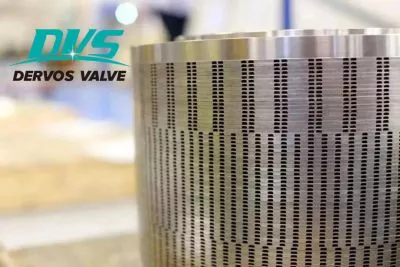Flash evaporation and cavitation of forged steel valves
Cavitation erosion is a form of damage that occurs on materials when the pressure and temperature of the fluid reach a critical value. It is divided into two stages: flash evaporation and cavitation.
Flash evaporation is a very rapid transition process. When the fluid flows through the regulating valve, local resistance is generated due to the locally contracted flow area of the valve seat and the valve flap, causing the pressure and velocity of the fluid to change.
When the fluid with pressure P1 flows through the orifice, the flow rate suddenly increases sharply, and the static pressure suddenly drops. When the post-hole pressure P2 reaches the saturated vapor pressure Pv under the condition of the fluid, part of the fluid vaporizes into gas, generating bubbles. The formation of a gas-liquid two-phase coexistence phenomenon, called the flash evaporation, can be seen as a systematic phenomenon.
The regulating valve does not prevent flash evaporation unless the system conditions change. When the downstream pressure of the liquid in the forged steel valve rises again and is higher than the saturation pressure, the increased pressure compresses the bubble and causes it to suddenly rupture, which is called the cavitation stage. The saturated bubble no longer exists during the cavitation process, but is rapidly blasted back to the liquid state. Since the volume of the bubbles is mostly larger than the volume of the same liquid. Therefore, the blasting of bubbles is a transition from a large volume to a small volume.
During the cavitation process, all the energy produced by bubble blasting is concentrated on the fracture point, causing several thousand Newtons of impact force. The pressure of the shock wave is as high as 2 × 103 MPa, which greatly exceeds the fatigue failure limit of most metal materials. At the same time, the local temperature is as high as several thousand degrees Celsius, and the thermal stress caused by these hot spots is the main factor causing cavitation damage.
Flash evaporation produces erosion damage and creates a smooth wear scar on the surface of the part. As the sand is sprayed onto the surface of the part, the surface of the part is torn to form a rough, slag-like outer surface. Under the harsh conditions of high pressure difference, the extremely hard valve flap and valve seat will also be damaged in a short time, and leakage will occur, which will affect the performance of the forged steel valve. At the same time, during cavitation erosion, the bubble burst during cavitation releases huge energy, causing vibration of internal parts, generating noise of up to 10 kHz. The more bubbles, the more serious the noise is.
